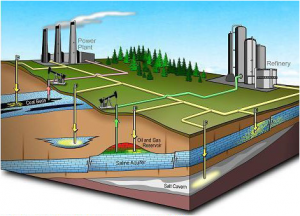Azolla has enormous potential to sequester of atmospheric CO2 due to its rapid growth in freshwater without the need for a soil-based nitrogen source. The sequestered carbon present in azolla’s biomass can then be removed from the biological cycle by conversion to solid carbon products. It therefore does not displace land need for food or biofuel crops, or natural ecosystems such as rainforests.
Most research has focused on azolla’s nitrogen production relating to rice fertilization and there is little published data on its sequestration potential.
Experiments were therefore carried out by Azolla Foundation founder and Associate Alexandra Bujak working with Azolla BioSystems Ltd to quantify the amount of CO2 that can be sequestered by Azolla filiculoides. She showed that it sequestered 32.54 metric tonnes CO2/hectare/year after 18 days growth with 10% initial cover of A. filiculoides.
Comparison with sequestration by other plants and algae
Data from Ben-Amotz (2008), Dawson & Smith (2007) and Alexandra Bujak’s study are plotted below and indicate the following approximate average sequestration values for [1] UK grassland, [2] UK forestry, [3] observed algae (Dunaliella), [4] ‘Maximum Theoretical Algal Productivity’ and [5] observed azolla and [6] Maximum Theoretical azolla:
[1] UK grassland: 1 tonnes of CO2/ha/yr
[2] UK forestry: 4 tonnes of CO2/ha/yr
[3] Observed algae (Dunaliella): 7 tonnes of CO2/ha/yr
[4] Maximum Theoretical Algal Productivity: 70 tonnes of CO2/ha/yr
[5] Observed azolla (Bujak study): 32.5 (approximated to 30) tonnes of CO2/ha/yr
[6] Maximum Theoretical Azolla: Productivity: 55 to 60 tonnes of CO2/ha/yr

Azolla’s CO2 sequestration values determined by Alexandra Bujak compared with those of other plants and algae.
This indicates that azolla’s observed sequestration of 32.5 metric tonnes CO2/ha/yr is approximately:
- 30 times that of UK grassland
- 8 times that of UK forestry
- approximately 4.5 times that observed in the alga Dunaliella
- approximately half of the ‘Maximum Theoretical Algal Productivity’ calculated by Ben-Amotz (2008).
Even higher growth rates of azolla can be achieved through a combination of biological, chemical and physical factors.
These include the selection of hybrids with higher growth rates, optimum temperature, relative humidity, pH, light intensity, photoperiod, and increased CO2 (for example at locations of industrial discharge of CO2).
Peters et al. (1980) also observed that azolla can double its biomass in less than two days and this has been confirmed by Azolla BioSystems’ research.
With a doubling time of one to two days azolla would sequester 55 to 60 tonnes of CO2/ha/yr (listed above as the ‘Maximum Theoretical Azolla Productivity’). This value is close to the ‘Maximum Theoretical Algal Productivity’ of 70 tonnes of CO2/ha/yr calculated by Ben-Amotz (2008).
Advantages over physical-chemical sequestration
Azolla’s CO2 sequestration and storage has major advantages over other methods of Carbon Capture and Storage which use chemical-mechanical (C-M) methods.
One C-M method proposes large chimneys that draw in air, with the CO2being absorbed by minerals and then transported as CO2 gas for underground storage like other C-M methods, this requires large areas for underground storage, careful selection of geological storage sites, and a pipeline infra-structure for transporting the gas.
In contrast, azolla converts the sequestered CO2 into solid carbon products such as biochar that can be easily transported and permanently stored.



